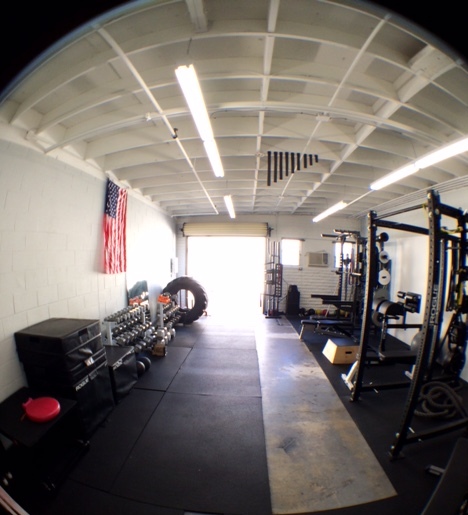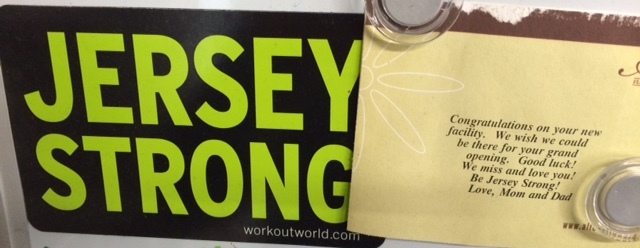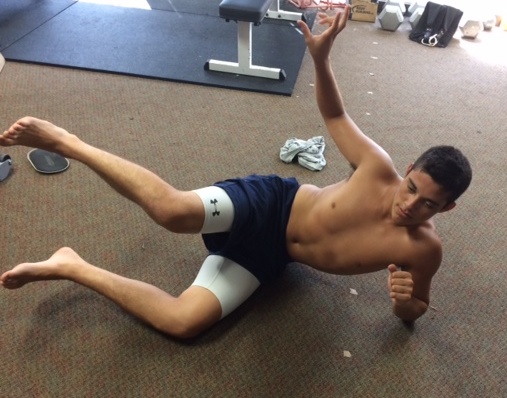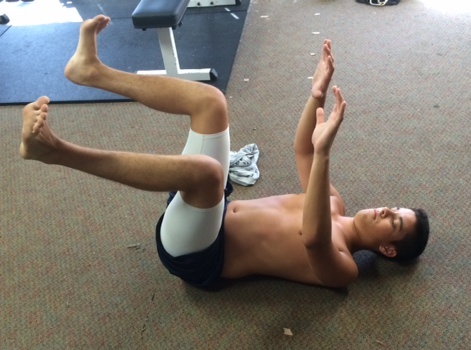Assessing Beyond The FMS
Assessing an athlete is the single most important moment between myself, an athlete, and the athletes parents for the first few months of training. A typical assessment goes like this… Step 1. Shake his hand and introduce myself. Step 2. Bring him to the training area and show him where the magic happens. Step 3. Sit him and his parent or parents on the couch and a life is changed forever. 4. Movement assessment 5.athletic assessment 6. Explain everything I saw during the assessment to the kid and parent. 7. Answer every single question 8. Begin making progress. 9. Sign the family tree. 10. Hand shake good bye, and a little message to let he or she know the journey we are about to embark on together.
The purpose of this article it to give a little insight as to what an assessment looks like, feels like, and accomplishes at 1RM Performance.
Step 1. The handshake and greeting
I love shaking hands with people. In a weird way, it lets me look into an athlete’s soul and see the kind of character they have. It the very start of the assessment, and often a telltale sign of how the rest of the day will go. I shake hands with kids every single time they show up and leave. In terms of handshakes, I feel everything. Whether it’s the strong hand shake with a deep look in the eye (my personal favorite), the hard shake with smirk, (someone has a story to tell), moderate shake with a big smile (I’m happy to be here, let go of my hand and let me warm up), the choke my fingers and look away ( I hate second to only what next) the limp hand,(which just makes me feel uncomfortable). Whatever the handshake is, it’s important.
I always greet my kids with a what’s up, I’m Bobby, and parents with just my name and a hand shake. I always make sure to get their names and tend to never forget from there on. I use kids names a lot when I’m working with them, and always introducing them to other athletes, so it’s incredibly important to me.
2. Showing off the training area and showing where the magic happens.
My gym isn’t pretty or glitzy; it’s often referred to as intense. And that’s how I like it. I’ll get into this a little later, but my athletes are with me because they know I will take them to the next level. We train hard, have fun, and train harder, but of course it’s all smart. The gym represents just that. In front I have my DNS chart, pictures of Yosemite, 30 strength and conditioning/movement/ assessment books, a coffee maker, water cooler and a couch, that yes I nap on it. The back is full of squat racks, a ghd, dumbbells to 120 (these always surprise kids) that multiple athletes use, benches, plyo boxes, sweet seakers, 7 totally different types of barbells, and enough weight for the world’s strongest man, kettlebells, t-shirts from athletes, and cubbies. Everything back there gets used, and gets used often. Nothing is skipped on, because I would never want an athlete to be held back by my equipment.
I love it back there. I am proud of everything that I have purchased. I have built it with my own needs in mind.
Step 3. Sit him and his parent or parents on the couch and a life is changed forever
I love this part! This is where my excitement takes over and I often lose track of where we are going. I’m getting goosebumps just writing this!
I first ask the kid for his goals, find out his medical history, current injuries, and or joints that hurt while performing, see what his current practice schedule looks like, find out his exercise history, and start painting a picture of what his training program might look like.
Once all those questions are done I make sure he or she asks me questions. If they can’t think of any I go a little crazy. You parents are trusting the future of your kids in my hands. Any idiot could put up a front and then the moment you leave, jeopardize the health and athletic future of your son or daughter! DO you homework and ask questions. Your kids have one chance to get it right. Please make sure they are in good caring hands, that are truly interested in your kids future. Not just the dollar sign sitting in front of them. I make sure parent and kids know everything about me, how I grew up, my work ethic, my education (which im proud of), my passion, my drive, my motivation, my nerdiness, my athletic history, training history, my current training goals, my injuries, and anything else they could want to know.
Then the jersey comes out! I let the kid know, what I do is not for everyone, I am weird, and hold my athletes to the highest standard possible. I would treat Lebron James, Barrack Obama, a14 year old middle of the pack baseball player, and potential first round draft pick the same. I expect them to take advantage over every single second they spend in the gym. There are 168 hours in a week. Of them they have 1-4 hours with me, so they better not waste their or my time. My athletes have a look when they come in the door. The look is recognized by other athletes in the gym. This is something that has been brought to my attention by a parent! It made me really excited.
Step 4. Movement Assessment
This is where I really get a closer look at an athletes risk of injury, where they could improve their power production, and what movement dysfunction they have established because of previous years of poor coaching, injuries, or other developmental issues.
First a kid takes a breath, literally a deep breath, so I can assess their sagittal stabilization. To follow is a blend of the DNS Assesssment and the FMS. I write down and see things that not many other people see. The pen doesn’t really stop. By the time the kids finish with a wall slide to assess more specific movement through their shoulders, I have a clear picture of how a kid moves, his risk of injuries, a plan on how to correct his movement dysfunction. (A magician never reveals all of his secrets)
Step 5. Athletic Assessment
You think you’re powerful? You think you’re fast? Now I find out. After a series of jumping and sprinting I see where an athlete is strongest and weakest. We all have weaknesses, sorry. Just as important as the number I acquire, is how I see an athlete move. Looking for asymmetrical loading, their breathing and stabilization patterns, and facial expressions to see where they are mentally. I always make sure to let kids see where they are, compared to everyone else, the best and the worst. I am a realist and love the poop test! What is that you ask? Well, if it looks like poop, smells like poop it is poop…get it?
(Ben ideal joint positioning in advanced position, poop, Dylan poor join position)
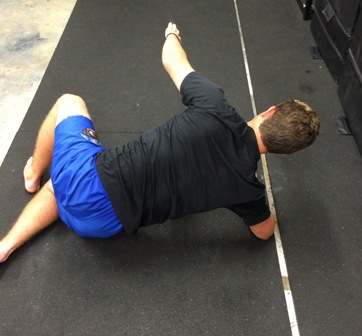

Step 6. Explain everything I saw during the assessment to the kid and parent.
I write a lot when I’m putting kids through the movement and athletic assessment. My eyes are going and I often don’t talk to much. I love seeing what I see and then explaining it to parents. (I like to think I have very detailed eyes. It could be from all the word searches and mazes I did with my mom as a kid.) Kid always ask what I keep writing down. They always find out.
I explain the dysfunction I see and how it puts them at risk for certain injuries. I let them see how they measure up to other athletes within the gym, and other athletes in the past. Like i said beforem I am very open, so I make sure to let them know where they surprised me and where I was expecting more. I let them know what I can see on their face, where I think they are mentally, and everything else that I might have noticed. I also ensure them that everything will get fixed. And if something can’t be fixed, I know people that I can talk to who will. I am an open book with my athletes. I think i'm one of the top strength coaches around, I'm not afraid to let my kids know this.
Step 7. Answer every single question.
At this point my new athlete and parents have questions. If they don’t I force them to think of some. If they are trusting me with their future you better have questions. I answer everything and anything. I explain things over and over again until everyone has an understanding. I make sure they know I can fix what I see, and am sure of what I am doing. I urge all of my kids to always ask why. I can’t say this enough. I make sure each other my new athletes understand that they will be the only ones following the training program they are following. No two athletes are the same, no two squat patterns are the same when kids grow up. Your cuing and programming shoulder reflect just that! You’re lazy if it doesn’t.
Step 8. Begin making progress
Here I address what I think stands out the most and needs to be corrected first in order to get the athlete moving forward right away. Since my first DNS workshop I have come to realize that every single one of my athletes has a stabilization issues, i.e. improper breathing patterns. This is often where I begin making progress. If you don't have proper sagital stabilization lying on your back, there is no way you will have any standing up. WIthout this stabilization, joints can not remain in neutral positions, and forces can not be transferred evenly around a joints. From there I assign homework that must be done so we can progress fast. It’s evident which kids do it by their second day in. These tend to be the most fun athletes to work with, and tend to make progress fastest.
Step 9. Sign the Family Tree.
My family is all in Jersey and Maryland. The void is filled by my athletes and clients. My family tree is truly my family out here. I make sure all kids recognize this. I let them know I am invested in each other of them and their future. Its an important moment for me and them.
10. Hand shake good bye, and a little message to let he or she know the journey we are about to embark on together
This sets the tone for the next time my athlete shows up. I always let them know I will always be there for them. I am not just their strength coach, but could be a friend and mentor. I expect hard work, motivation, and trust.
My life and the life of my athlete is never the same after the first assessment. The days that follow result in a ton of progress and magic. Kids make progress really fast. It is not uncommon to have throwing velocity improve by 5 or 6 miles an hour after the first two weeks, and pain to disappear, simply because of improvements in their throwing mechanics which are a result of the improvement in joint position, improvements in whole body stability, and hard work on my end and the end of the athlete. We take this journey together. WE squat, WE train, and WE all get better!
